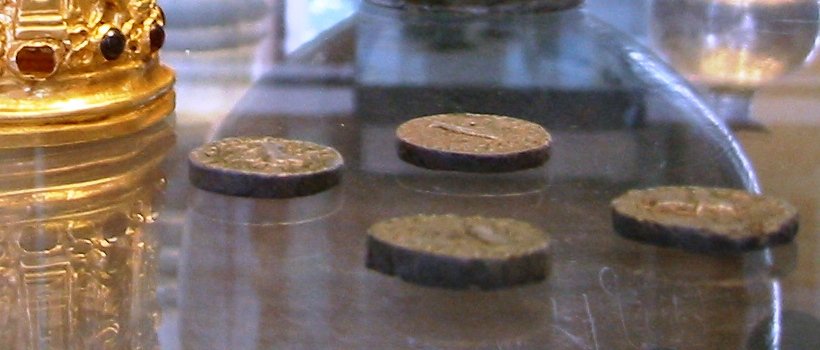The Bimaran Casket – Rare Golden Artifact Found In Ancient Stupa
A. Sutherland - AncientPages.com - This tiny artifact, the Bimaran Casket, is only 7 cm (2 3/4 in) high. It is made of gold and was discovered without its lid. The bottom of the artifact is decorated with a lotus, which symbolizes purity and beauty in Hinduism and Buddhism.
The Bimaran relic is cylindrical and covered with relief carvings of eight figures hammered from the reverse. CC BY-SA 3.0 - Photo credits: British Museum
The artifact, probably Indo-Greek work, is a small ancient Buddhist box for relics and represents a rare iconography.
It was found inside the stupa chamber at Bimaran, an ancient site northwest of India, on the right bank of the Kabul river.
His discoverer is the archaeologist Charles Masson (1800–1853), whose real name was James Lewis, a British East India Company soldier, traveler, and explorer.
The Bimaran Casket was discovered in a form-fitting steatite box. The inscription on the small container reads as follows:
The steatite box contained the Bimaran casket. Photo: British Museum. Personal photograph 2005 - CC BY-SA 3.0
"Sacred gift of Shuvaraksita, son of Munjavamda, presented for Lord's relics, in honor of all Buddhas."
(translated by G. Fussman).
The Indo-Scythian coins found inside were in pristine condition, apparently uncirculated, and are now in the British Museum, London
In the region of Bimaran, archaeological excavations revealed remains of four larger stupas and at least two groups of votive stupas. The first stupa is 38.40 meters in circumference but in fallen into partial ruin or decay.
It has shallow decorative pillars attached to a wall, and inside, among jewelry and coins, was a steatite vase and cover, both covered with inscriptions in kharoshthi.
The Kharosthi script was invented sometime in the 3rd century BC and possibly derived from the Aramaic script. It was used in Gandhara, an ancient kingdom in what is now the northwest of Pakistan, and the Jalalabad district of Afghanistan. Kharosthi texts have also been found along the Silk Road in Bactria, Kushan, Sogdia, and parts of China.
The coins of Azes II found inside the Bimaran casket. Photo: British Museum. Personal photograph - world imaging, 2005 - CC BY-SA 3.0
There was also found the Bimaran Casket, decorated with rubies and depicting scenes of Buddha. The Casket is now at the British Museum in London.
The second stupa, 43.90 meters in circumference, lies in the center of the village. It stands on a square platform and contains a steatite vase, jewelry, gold ornaments, and coins. The third is 33 meters in circumference and is surrounded by many mounds and two parallel lines of votive stupas.
Inside was a silver reliquary of jewels and coins. The fourth is 43.9 meters in circumference and is surrounded by extensive building debris. It contained nothing. In addition to the stupas, there is a complex of six artificial caves in the foothills to the north.
Masson was the first European to discover the ruins of Harappa near Sahiwal in Punjab, now in Pakistan.
When Masson found the Casket during his work in Afghanistan between 1833 and 1838, it contained coins of the Indo-Scythian king Azes II, believed never existed, and finds attributed to his reign probably should be reassigned to Azes I. Therefore, researchers suggested a date from around 30 BC to around 10 BC.
The Bimaran relic is cylindrical and covered with relief carvings of eight figures hammered from the reverse. It includes two groups of Brahma, Buddha, and Indra on either face and two devotees. The artifact is also sometimes dated to a slightly posterior date of 50 CE, based on a redeposition theory, and sometimes much later (2nd century CE), based on artistic assumptions.
The inscription informs that the Casket contained some of the Buddha's bones. However, the lid and the relics were missing by the time this artifact was found.
The small gold carving of Buddha in this Casket is considered the earliest anthropomorphic representation of the Buddha.
Written by – A. Sutherland - AncientPages.com Senior Staff Writer
Updated on March 24, 2023
Copyright © AncientPages.com All rights reserved. This material may not be published, broadcast, rewritten or redistributed in whole or part without the express written permission of AncientPages.com
Expand for referencesReferences:
Le May, Reginald. "The Bimaran Casket." The Burlington Magazine for Connoisseurs 82, no. 482 (1943): 116-23.
More From Ancient Pages
-
 3,500-Year-Old Tomb Of Egyptian Goldsmith Discovered
Archaeology | Sep 10, 2017
3,500-Year-Old Tomb Of Egyptian Goldsmith Discovered
Archaeology | Sep 10, 2017 -
 Kava – Astonishing Ancient Plant That Improves Emotional Intelligence Is Gaining Popularity In The Western World
Featured Stories | Mar 31, 2018
Kava – Astonishing Ancient Plant That Improves Emotional Intelligence Is Gaining Popularity In The Western World
Featured Stories | Mar 31, 2018 -
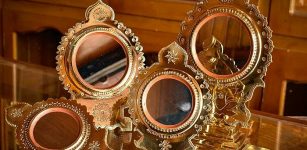 Ancient Secrets Of The Aranmula Kannadi Mirror That Reflects You As You Really Look
Artifacts | Sep 10, 2021
Ancient Secrets Of The Aranmula Kannadi Mirror That Reflects You As You Really Look
Artifacts | Sep 10, 2021 -
 Perfectly Preserved Roman Tombs Discovered Near City Of Capua Where Spartacus Trained As Gladiator
Archaeology | Jan 7, 2021
Perfectly Preserved Roman Tombs Discovered Near City Of Capua Where Spartacus Trained As Gladiator
Archaeology | Jan 7, 2021 -
 What Is The Curse Of The Ninth Symphony?
Ancient History Facts | Aug 3, 2018
What Is The Curse Of The Ninth Symphony?
Ancient History Facts | Aug 3, 2018 -
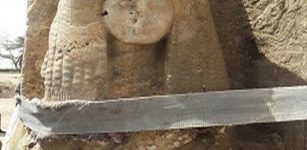 Archaeologists Unearthed Alabaster Statue Of Queen Tiye In Luxor, Egypt
Archaeology | Mar 24, 2017
Archaeologists Unearthed Alabaster Statue Of Queen Tiye In Luxor, Egypt
Archaeology | Mar 24, 2017 -
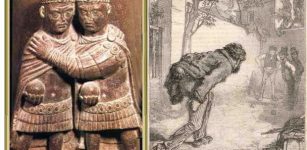 Ancient Egyptians Played Bowling 5,000 Years Ago
Ancient History Facts | Feb 22, 2016
Ancient Egyptians Played Bowling 5,000 Years Ago
Ancient History Facts | Feb 22, 2016 -
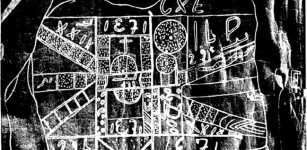 Undeciphered Ancient Stone Maps With Mysterious Signs May Hold Key To The Spider Rock Treasure
Artifacts | Apr 29, 2014
Undeciphered Ancient Stone Maps With Mysterious Signs May Hold Key To The Spider Rock Treasure
Artifacts | Apr 29, 2014 -
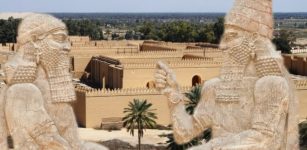 Mysterious Death Of Cambyses II – Natural, Suicide Or Assassination By Darius I The Great?
Featured Stories | Apr 21, 2021
Mysterious Death Of Cambyses II – Natural, Suicide Or Assassination By Darius I The Great?
Featured Stories | Apr 21, 2021 -
 Norse Kingdom Of Dublin Was Founded By The Vikings In 839 A.D.
Ancient History Facts | Mar 15, 2016
Norse Kingdom Of Dublin Was Founded By The Vikings In 839 A.D.
Ancient History Facts | Mar 15, 2016 -
 Unexplained Forest Mystery In Oregon Baffles Scientists
Featured Stories | Jun 24, 2024
Unexplained Forest Mystery In Oregon Baffles Scientists
Featured Stories | Jun 24, 2024 -
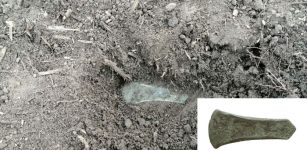 Rare Early Bronze Age Axe Discovered In Slovakia
Archaeology | Jul 2, 2022
Rare Early Bronze Age Axe Discovered In Slovakia
Archaeology | Jul 2, 2022 -
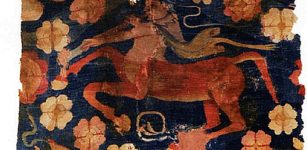 Sampul Tapestry: Mysterious Silk Road Textile Linked To Hellenistic Kingdoms Of Central Asia And Tarim Basin
Artifacts | Nov 21, 2018
Sampul Tapestry: Mysterious Silk Road Textile Linked To Hellenistic Kingdoms Of Central Asia And Tarim Basin
Artifacts | Nov 21, 2018 -
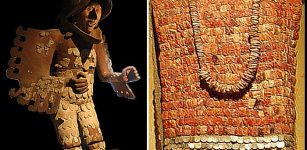 Fearsome Aztec Eagle And Jaguar Warriors Of Mesoamerica
Featured Stories | Sep 14, 2023
Fearsome Aztec Eagle And Jaguar Warriors Of Mesoamerica
Featured Stories | Sep 14, 2023 -
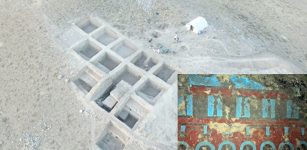 First Look At Mysterious 2,700-Year-Old Underground Frescoes Hidden Inside An Urartu Structure
Archaeology | Oct 6, 2022
First Look At Mysterious 2,700-Year-Old Underground Frescoes Hidden Inside An Urartu Structure
Archaeology | Oct 6, 2022 -
 Roman Empire’s Emerald Mines In The Egyptian Eastern Desert – New Evidence
Archaeology | Mar 2, 2022
Roman Empire’s Emerald Mines In The Egyptian Eastern Desert – New Evidence
Archaeology | Mar 2, 2022 -
 World’s Oldest Fairy Tale – The Smith And The Devil Has Survived For Several Millennia
Ancient History Facts | Aug 30, 2017
World’s Oldest Fairy Tale – The Smith And The Devil Has Survived For Several Millennia
Ancient History Facts | Aug 30, 2017 -
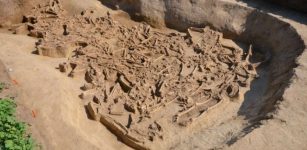 Gruesome Discovery Of Headless Bodies In Vráble, Slovakia – Remains Of Stone Age Cult Victims Unearthed
Archaeology | Sep 24, 2022
Gruesome Discovery Of Headless Bodies In Vráble, Slovakia – Remains Of Stone Age Cult Victims Unearthed
Archaeology | Sep 24, 2022 -
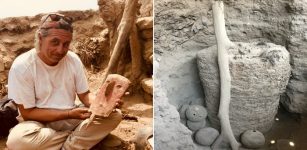 A 1,000-Year-Old Intact Mummy Unearthed In Ancient Pachacamac Site, Peru
Archaeology | May 31, 2018
A 1,000-Year-Old Intact Mummy Unearthed In Ancient Pachacamac Site, Peru
Archaeology | May 31, 2018 -
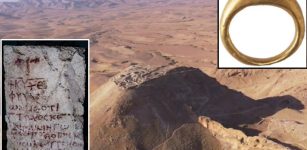 Byzantine Greek Inscription Of Psalms 86 Found In Hyrcania
Archaeology | Sep 29, 2023
Byzantine Greek Inscription Of Psalms 86 Found In Hyrcania
Archaeology | Sep 29, 2023



